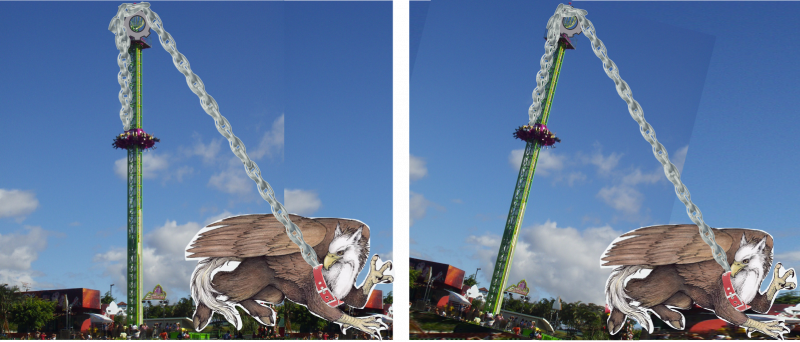This is an old revision of the document!
Project 7: Part A: The Leaning Tower of P-cubed
Learning Goals
Project 7: Learning issues
- Choosing an appropriate solution
- Local gravitational potential energy
- Energy conservation
- Work
- Non-constant forces
Universal Studios in association with the Carver Media Group has created a travelling version of the Wizarding World of Harry Potter. All of the rides in this new amusement park are all either animal or solar powered in order to be more environmentally friendly. You and your colleagues have been asked by your employer (CMG) to travel with the park and to fix any issues that might come up.
At one of the traveling park's first stops (Pittsburgh, PA) the Gryffin-Drop Tower was incorrectly set up. Instead of standing perfectly vertical, the 40m tall tower is leaning at an angle of 10 degrees. The drop tower is powered by hippogriffs attached to a large pulley using harnesses. Each hippogriff can pull with a maximum force of 3,500N. The drop car weighs 4500kg and seats 30 people. The tower is steel, and where the drop car touches the tower is also steel.
Your boss wants to know: How many more hippogriffs will it take to raise the slanted cart?
There is a hippogriff breeder (Andrew) in Pittsburgh, who is also a biology professor at Carnegie Mellon University, who is willing to rent you as many hippogriffs as you need for the 2 weeks you will be in Pittsburgh. The hippogriffs will each cost \$20/hr. The ride is open for an average 16 hours everyday.
One of the park engineers, Mary Lyon, says that it would cost approximately \$10,000 to take down and reassemble the tower correctly in the 24 hours before the park opens.
Your boss also wants to know: Will it cost more to fix the problem or to rent the hippogriffs for two weeks?
